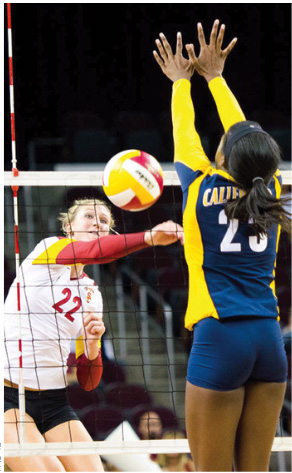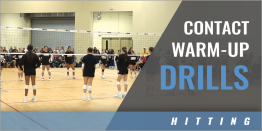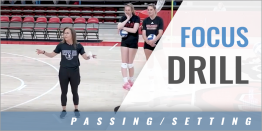| The 7 Speeds of Volleyball - A New Way of Developing Your Players |
| By: Ken Kontor
Originally Published in: Coaching Volleyball Copyright/Provided by: American Volleyball Coaches Association Here's how it works: • We present each speed with a short definition. • Look at the exercises/drills you do in practice, and assign a "speed value" to each of the 7 speeds for particular exercises/drills. This "speed value" should be on a scale of 0 to 5 for each. • Calculate the total value for each speed for each exercise/drill. The higher the number, the more emphasis you have put on that speed. • Determine which speeds your team needs to work on, and design your program accordingly by prioritizing the exercises that have the highest "speed value" to fit your needs. The 7 Speeds of Volleyball These are the 7 speeds of volleyball that should address beginner-level problems as well as situations for the more advanced player. #1 Kinesthetic Awareness Speed Kinesthetic awareness speed relates to an athlete's ability to determine where their body is in relation to space, and to be aware of their position on the court to quickly relate this information to the game. The game of volleyball is played at varying degrees of ball and player heights, all in a relatively small space (a player may be towering over the net or the kill, and a second later their opponent may be flat on the ground for a pancake dig). The challenge of knowing where you are in relation to the court and the net at game speed takes an incredible amount of practice under game situations. #2 Reading Speed Reading speed is the ability to predict what will happen before it happens, a skill acquired through previous experiences. Reading speed has to be gained through experience with one major qualification - that experience must be game-like.
#3 Decision Making Speed This speed is the ability to make fast decisions from a variety of options in the shortest amount of time. Like the two speeds preceding it, this speed only develops through game-like training. Great players make good decisions by getting into a neutral position. That comes from the two prior speeds. #4 Reaction Speed This speed is the ability to react to a previous action from the ball, an opponent or a teammate. Thus far the speeds we have discussed and their development have had a lot to do with playing experience. We have looked at the where we are on the court, kinesthetic speed, the second before the ball is touched, reading speed and finally as the ball is touched with decision-making speed. Now we are talking about speed after the ball has been touched. #5 Movement Speed without the Ball This speed is defined as the ability to move at maximum speed without the ball utilizing cyclic (patterned) and acyclic (random) movements. When you watch a match, you see that one person is touching the ball. The other 11 players are going to be doing something else, getting ready to react. They are all moving to adjust to where the ball goes. #6-#7 Action Speed with the Ball and Game Action Speed I consider these two final speeds of volleyball together. Action speed with the ball is defined as the ability to perform a task with the ball at a maximum speed. This speed and game action speed (the ability to make fast, effective decisions during a game in relation to technical, tactical or conditional possibilities) are a result of everything that we have leading up to them. The next step is to put the "speed values" into our 7-T Fit-to-a-T System of Program Design. Unfortunately space doesn't allow for these details. We'll provide more information in future articles in Performance Conditioning Volleyball. My personal thanks to John Kessel for developing the 7 Speeds of Volleyball |








